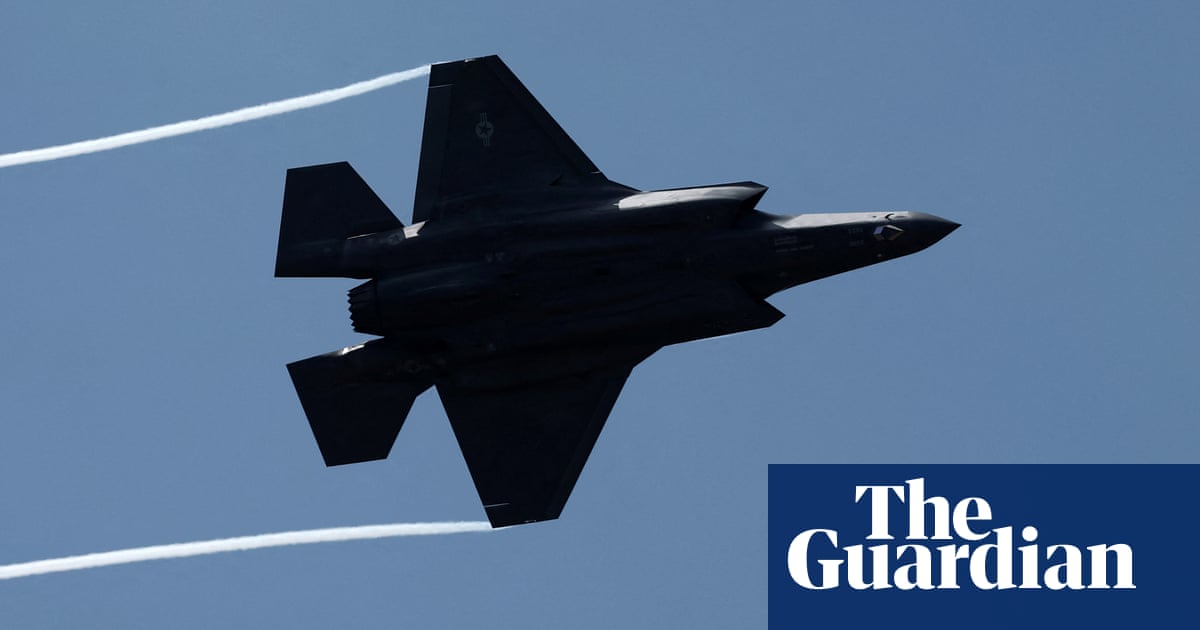The UK is to substantially expand its nuclear deterrent by buying a squadron of American-made fighter jets that are capable of delivering US tactical warheads that are likely to be stored on British soil.
The announcement byKeir Starmerat the Nato summit marks the most significant change in Britain’s nuclear posture since the end of the cold war, with US bombs set to return to the UK, and is bound to provoke alarm among arms control experts and campaigners.
Under the plan, the UK will buy 12 of the F-35A jets, which are capable of carrying conventional munitions and also the US B61-12 gravity bomb, a variant of which has the explosive power of more than three times the weapon dropped on Hiroshima.
“In an era of radical uncertainty we can no longer take peace for granted,” Starmer is expected to say. “These aircraft will strengthen our armed forces and support communities across the country through our defence industry.”
US nuclear weapons have not been stored in the UK since the last left RAF Lakenheath in 2008 – while Britain has not had its own air-launched nuclear weapons since 1998, when the WE177 was scrapped by the then Labour government.
Since then, the UK’s nuclear deterrent has been delivered solely via its Trident submarine fleet, whose warheads carry the explosive power to destroy a city. But military planners say there needs to be a “substrategic” capability that could be employed on the battlefield to deter an attack by Russia on aNatocountry.
The F-35As will be based at RAF Marham in Norfolk and will join Nato’s dual capable aircraft (DCA) programme – part of the alliance’s longstanding strategy to deter adversaries with a shared, US-led nuclear umbrella.
Similar arrangements have existed since the cold war in Germany, Italy, Belgium, the Netherlands and Turkey. In each case, the nuclear weapons belong to the US and remain under the control of the US president, because they cannot be sold or given to another country under the terms of the Non-Proliferation Treaty. Officials said the UK would remain compliant with that international agreement.
The Ministry of Defence has a longstanding policy of not commenting on where nuclear weapons are deployed, though there are vaults at RAF Marham, where British tactical weapons were previously stored, though their readiness is unclear.
Old storage vaults for nuclear weapons exist at nearby RAF Lakenheath, which is used by the US air force. They are in the process of being upgraded in programmes funded by the US taxpayer, though the American facility is 20 miles away.
The B61-12 is designed to have four different explosive yields, of 0.3 kilotons (kt), 1.5kt, 10kt and 50kt, according to the Federation of American Scientists. By comparison, the Hiroshima bomb that killed anywhere between 70,000 and 140,000 people had an explosive yield of 15kt.
Officials said the new jets will support more than 20,000 jobs and over 100 UK suppliers, though the jets are manufactured by US defence firm Lockheed Martin.
Ministers have also emphasised the cost benefit of switching from the F-35B which costs roughly £100m, to the F-35A model, which they claim will deliver savings of up to 25% per aircraft. The purchase is part of a longstanding plan to acquire up to 138 F-35s in total.
Starmer added: “Supporting 100 businesses across the country and more than 20,000 jobs, these F35 dual capable aircraft will herald a new era for our world-leading Royal Air Force and deter hostile threats that threaten the UK and our allies.”
Nato’s secretary general, Mark Rutte, welcomed the move as “a robust British contribution to the alliance”.
The decision follows warnings in this year’s strategic defence review about rising global instability and renewed nuclear threats. The defence secretary, John Healey, said the announcement reflected a “Nato-first” strategy and used defence as a “growth engine” for the UK economy.
The government has warned in a newly published security strategy that Britain needs toprepare for the possibility of being attackedon its own soil. Russia’s military buildup and Iran’s increasing attacks on dissidents abroad mean the country could soon find itself involved in a domestic war, the review said.
“For the first time in many years, we have to actively prepare for the possibility of the UK homeland coming under direct threat, potentially in a wartime scenario,” the review said.
The warning echoed the recent comments from Rutte that, without a big increase in defence spending, British people “better learn to speak Russian”. Starmer, who is at theNato summit in The Hague, has promised to meet Nato’s target of spending 5% of gross domestic product on defence by 2035.
The security review goes into fuller detail about the threats that the country is dealing with both at home and abroad, naming Russia as the principal among them,given the Kremlin’s frequent cyber-attacksand attempts at sabotage.
